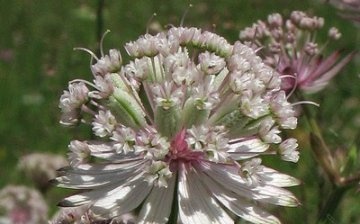Astrantia large: growing a plant
Astrantia large in natural conditions is common in many European countries with a temperate climate, as well as in the European part of Russia. Recently, the number of these plants has decreased many times, and many species of Astrantia were included in the Red Book. The plant blooms throughout the summer, and under favorable conditions, its flowering can resume in autumn - in September-early October.
Many species of this modest, but graceful and very unpretentious plant are cultivated (moreover, according to some sources, large Astrantia is one of the oldest cultivated plants, and its cultivation began in the 16th century). Best of all, the flower propagates by the so-called cuttings, which are obtained as a result of dividing the bush in early spring or autumn, closer to frost. Astrantia can also be propagated by cutting the rhizome (this should be done at the very beginning of spring, before young leaves begin to grow).
It is advisable to place the plant in sunny places, but it will feel good in a slightly shaded area. Astrantia is undemanding to the soil, but it will grow best in loose garden soil, and in a well-fertilized fertile area, it can grow for more than five to seven years. This flower is very unpretentious and requires minimal maintenance: Astrantia can endure even a fairly long lack of moisture and low temperatures. To increase the number of flower stalks and form an even, neat bush, it is imperative to cut off the first flower stems.



